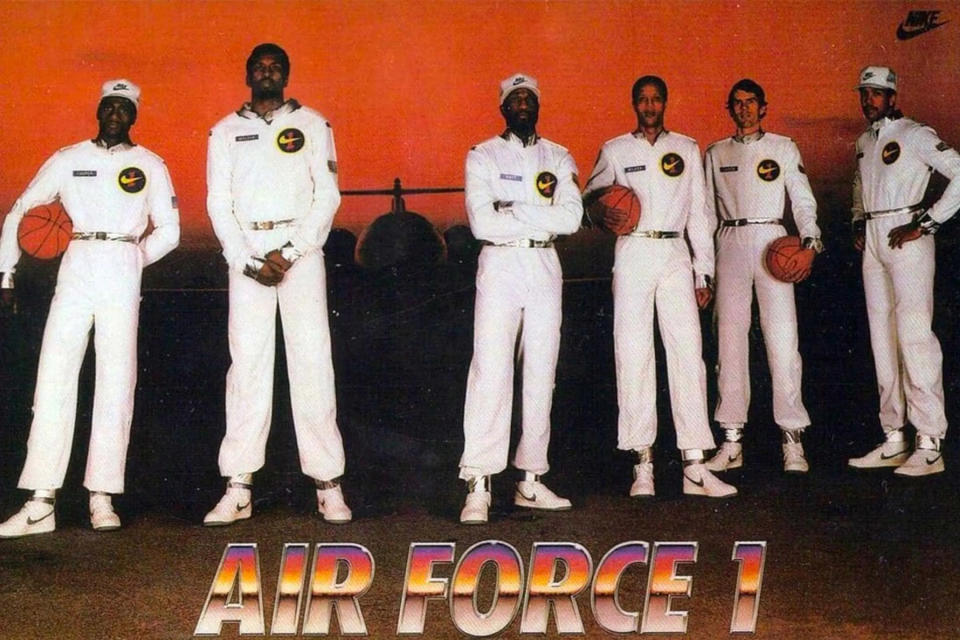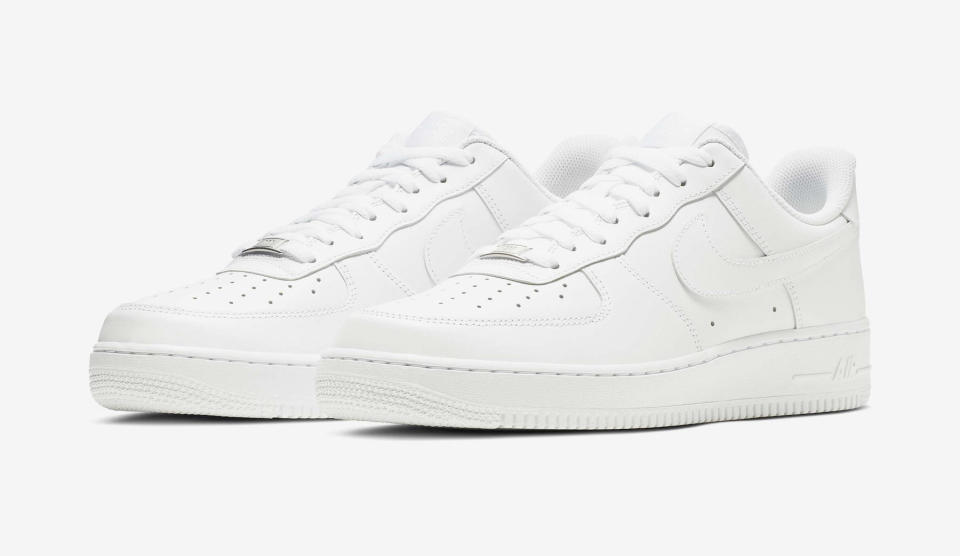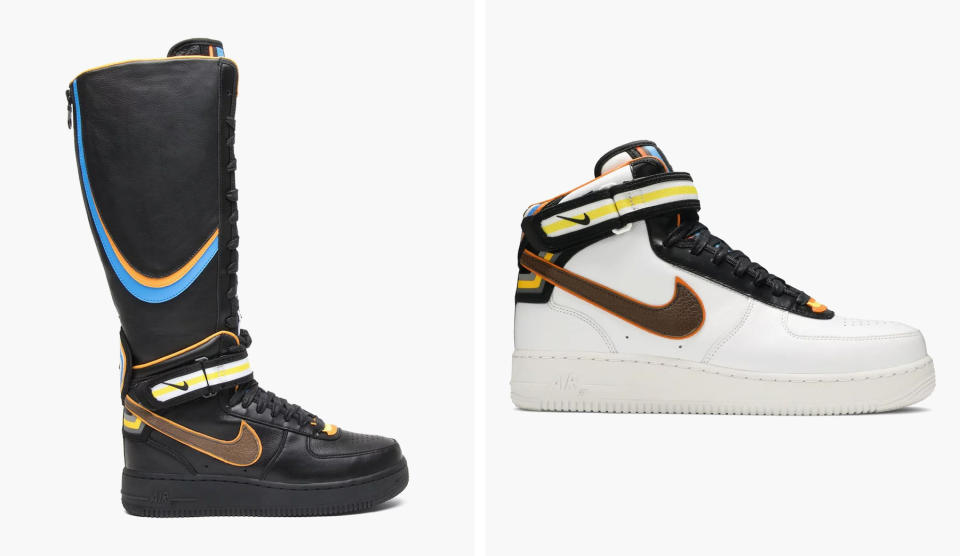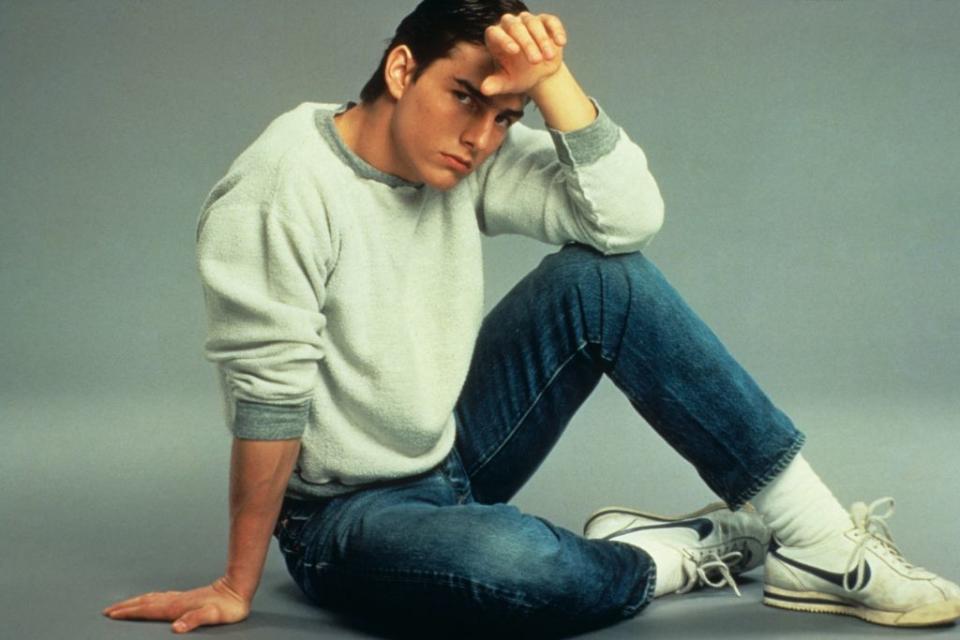Air Force 1 History & Timeline: Everything You Need to Know About the Air Force 1

Were there a Mount Rushmore for sneakers, the Nike Air Force 1 would be guaranteed one of its fourth slots. Not only is it Nike’s best-selling shoe of all-time, but its history is steeped in several moments single-handedly responsible for sneaker culture today as we know it.
Reissued sneakers: you can thank the Air Force 1s. Exclusive colorways: extend credit to the same source. The number of pairs sold is in the millions, and thousands of different versions of the sneaker have gone on sale
More from Footwear News
The Air Force 1 has remained a staple for 40 years, enjoying a level of longevity that few wearable objects, let alone sneakers, enjoy. Even the Air Jordan 1 had a period of languishing on shelves in the ’90s, but the Air Force 1 has never had a comparable dip in appeal.
Below, Footwear News takes you through the history of the Air Force 1, providing you everything you need to know about the iconic model.

1982 Debut
Nike launched the Air Force 1 in 1982 as a high-top and the company’s first basketball sneaker to feature Air technology, which had made its debut three years earlier on the Tailwind running shoe.
The hiking boot-inspired design from Bruce Kilgore — who would go on to create the Air Ship, aka the “Pre-Jordan,”and the Air Jordan 2 — featured a velcro strap around the ankle for security, perforations on the toe for breathability, and concentric circles on the outsole stationed at key areas for pivoting. In 1983, the most popular version of the Air Force 1 would arrive through a low-top intended even then to draw more lifestyle appeal.
A group of NBA players now known as the “Original Six” starred in the Air Force 1’s launch campaign, which played into the inspiration from the call sign of the president’s aircraft: Moses Malone, Michael Cooper, Calvin Natty, Jamaal Wilkes, Bobby Jones, and Mychal Thompson — the latter of whom is Klay Thompson’s father.
Six AF1 high colorways were made to correspond with the players’ respective teams and released after the debut scheme featuring a white base with grey strap, Swoosh, and outsole.
The Air Force franchise would continue to include a total of five numbered models until 1990’s Air Force 5 brought the series to a close. Of course, it was only the first that would endure for another 40 years — but the Air Force 1 very easily could have been left behind as well.
Baltimore Prevents Discontinuation
Were it not for the city of Baltimore, not only is it possible the Air Force 1 wouldn’t be around today, but the entire concept of “retro” sneakers may have never come into existence.
Nike discontinued the Air Force 1 in 1984, as was eventually the practice for all of its sneakers, except for Baltimore, where the stores Charley Rudo, Cinderella Shoes, and Downtown Locker Room were able to convince the company to continue supplying them exclusively with new pairs.
The “Color of the Month Club” was thus born, creating the idea of exclusive colorways and a culture of collecting them. Seminal sneakerheads would travel from throughout the East Coast just to get the limited-edition sneakers that would sell through at a rate of 100 percent.
After witnessing the success of the program, Nike would then bring back the Air Force 1 on a wider basis in 1986, marking the first time it had ever reversed course on a discontinued sneaker.

First Pair of All-White Lows, aka “Uptowns”
Somewhat inexplicably, the now-quintessential all-white Air Force 1 wasn’t born until the mid-’90s. The precise history is a bit murky, a consequence of the pre-internet era and sneakers still being a relatively niche interest, but it’s clear it took at least a decade before the entire show arrived draped in white. Some colorways had gotten close, such as an otherwise white version with a gum sole from 1991, but none would hit quite the same as the true “Triple Whites.”
Part of the appeal comes down to the versatility of the blank slate, but an outsized amount of credit has to go to the community of hustlers in New York City. Dating back to the ‘80s, drug deals have been attributed with ditching pairs of Air Force 1s as soon as they show any signs of wear as a way to flaunt their wealth. Given how easy it is to spot any smudge on a pair of all-whites, maintaining a crisp pair at all times became an even more natural flex. It’s because of this history that sneakerheads will often deride those who wear dirty, or “cooked,” all-white Forces.
Because of their popularity in Harlem in particular, all-white AF1s are commonly referred to by the nickname “Uptowns,” as in Uptown Manhattan. Their appeal spread throughout the five boroughs and the broader East Coast, however — and hip-hop would go on to showcase (and further facilitate) an even broader reach.
Hip-Hop, Collaborations, and the 2000s
Because rappers often drew their style inspiration from drug dealers, it was only natural for the sneaker to become a staple in the culture. Jay-Z, who operated in both spaces, is often credited with being the first rapper to specifically call out a pair of Triple-Whites on record, as he rapped in 1998 on “Can I Live II,” “ For all my n****s with the all-white Air Force Ones and black guns.”
The relationship between hip-hop and Air Force Ones would become even greater in the early-aughts, most prominently in the song “Air Force Ones” by Nelly. Other rappers closely associated with the sneakers are Fat Joe and the entire Dipset crew. Nike even made exclusive pairs of AF1s for the record labels of Jay-Z and Fat Joe — Roc-a-Fella and Terror Squad, respectively — which wouldn’t be released to the public until more than a decade later.
The early-’00s ushered in an increase in regionalized exclusives and the onset of collaborations such as the Japan-only Air Force 1 Low CO.JP “Linen” from 2001 and Stash’s Air Force 1 High from 2003. Together with Nike’s Dunks, this period of Air Force 1 releases set up today’s landscape for hyped sneaker drops.
Throughout this same time, Rasheed Wallace and Jerry Stackhouse also continued to wear the Air Force 1 High while playing in the NBA — rejecting modern technology in favor for in-game footwear that was already two decades old.
Nike Welcomes High Fashion

Riccardo Tisci, then working at Givenchy, became the first high-fashion designer to be tapped by Nike for collaboration on a sneaker in 2014, when he transformed the sneaker into a full-on boot while also releasing less extreme versions of the high-top.
Tisci’s work opened the door for other designers to make more extreme changes on Nike sneakers for their collaborations — Virgil Abloh would run with this idea most prominently — and for Nike to remix the silhouette in-house to become a platform, hiker, duck boot, and more. The Air Force 1 has essentially never gone away fully, but never has it appeared in as many forms as it does today.

50 Years of Nike Through TV, Film and Celebrities
About the Author:
Ian Servantes is a Senior Trending News Editor for Footwear News specializing in sneaker coverage. He’s previously reported on streetwear and sneakers at Input and Highsnobiety after beginning his career on the pop culture beat. He subscribes to the idea that “ball is life” and doesn’t fuss over his kicks getting dirty.
Launch Gallery: 50 Years of Nike Through TV, Film and Celebrities
Best of Footwear News
Sign up for FN's Newsletter. For the latest news, follow us on Facebook, Twitter, and Instagram.
